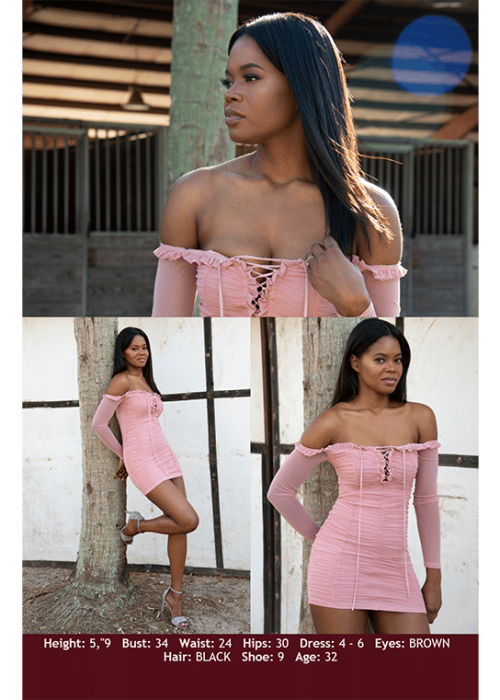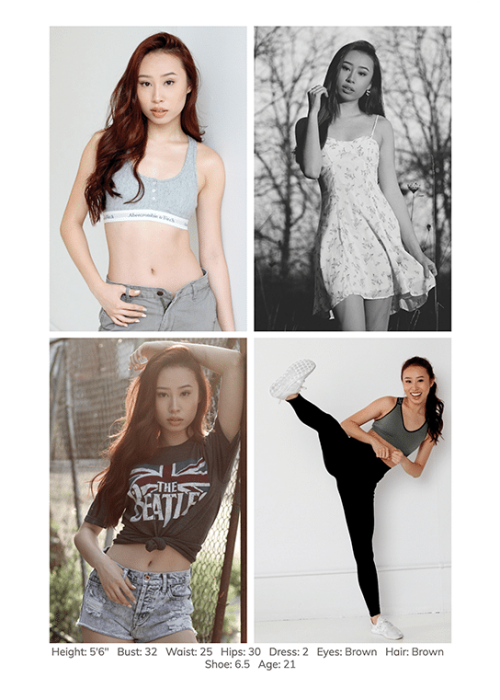



In the highly competitive world of modeling, standing out from the crowd is essential to land gigs and build a successful career. One of the most important tools in a model’s arsenal is the model comp card. Often referred to as a composite card or z-card, a model comp card is essentially your professional business card in the modeling industry. It represents your skills, versatility, and personality in a compact and visually appealing format. But how do you make sure your comp card captures attention and gets you booked?
In this detailed guide, we will walk you through 10 powerful tips to create a stunning model comp card that will help you land more gigs and boost your career prospects. Whether you’re just starting or looking to refresh your current comp card, this blog will provide everything you need to know!
A model comp card is a printed or digital card that models use to market themselves to agencies, casting directors, and potential clients. Think of it as a resume but designed specifically for the modeling industry. Typically, it showcases the model’s best photos along with essential information such as height, weight, hair color, eye color, and contact details. This card serves as a quick reference for industry professionals to gauge your potential for different projects and roles.
A well-designed model comp card can be a deciding factor in getting noticed and booked for a variety of gigs—from print work to runway shows and commercial modeling.
Model comp cards are more than just a formality. They provide a snapshot of your look and professional experience and are one of the first impressions you’ll make with potential employers. Here are some key reasons why having a great comp card is critical to your success in the modeling industry:
Now that we understand the importance of a model comp card, let’s dive into how you can create one that will wow agencies and clients alike.
Before we get into specific design tips, it’s essential to know the key components of a model comp card. Here’s what every model comp card should include:
The images you choose for your model comp card should be of the highest quality. This means they should be professionally shot and edited. Avoid using low-resolution or blurry images, as they can come across as unprofessional. Your comp card is a reflection of you, so only include images that showcase your best features and highlight your versatility.
Your headshot is the most important image on your comp card—it’s usually the first thing a casting director or client will look at. Your headshot should be clean, simple, and natural. It should focus on your face with minimal distractions in the background. Remember, your headshot is about showing your natural beauty and personality.
While your headshot is the most important, the rest of your images should showcase your versatility as a model. Include full-body shots, editorial-style images, and commercial photos that show different emotions and styles. If you do fashion modeling, make sure to include both casual and high-fashion looks. For commercial modeling, it’s important to have a range of expressions that could fit different types of advertising.
Agencies and clients rely on your comp card for accurate information about your physical stats. Make sure your height, weight, bust, waist, hips, and other measurements are up to date. Inaccurate stats can lead to misunderstandings or even lost opportunities. If you’re freelance, include your own contact details or, if you’re represented, make sure your agency’s contact information is prominent.
The layout of your model comp card should be clean, professional, and easy to read. Avoid cluttering your card with too many design elements or overly ornate fonts. The focus should be on you, not the card’s design. Stick to neutral colors and simple fonts that look professional and polished.
Model comp cards are typically 8.5 x 5.5 inches, which is a standard size in the industry. This makes them easy to carry and hand out during casting calls or send in the mail. Keeping your comp card to this standard size ensures it fits neatly into a potential client’s or agent’s file.
As you gain more experience and update your portfolio, it’s important to refresh your model comp card regularly. Replace older images with new ones that better represent your current look and skills. An outdated comp card can hurt your chances of getting booked, especially if your appearance has changed significantly.
In today’s digital age, social media is an important part of your personal brand. If you have a professional modeling portfolio on Instagram or another platform, consider including your social media handle on your comp card. However, make sure your social media is professional and represents your brand before linking it.
In addition to a printed model comp card, it’s a great idea to have a digital version as well. Many agencies and clients now prefer digital submissions, so having a high-quality PDF or online comp card will make it easier to share. Ensure the digital version is properly formatted for mobile viewing, as many casting agents may view it on their phones or tablets.
Before finalizing your comp card, get feedback from professionals in the industry. This could include your agent, photographer, or a trusted mentor. They can offer valuable insight into whether your card is as strong as it could be and help you make any necessary tweaks before it goes to print.


While there are many ways to create a successful model comp card, there are also some common pitfalls to avoid:
Once your comp card is ready, it’s time to print and distribute it. Many models choose to print their comp cards through professional printing services that specialize in industry-standard formats. When printing, opt for high-quality card stock to ensure your comp card feels professional.
In terms of distribution, bring your comp card to every casting call and networking event. You should also keep several on hand for impromptu opportunities. If you’re represented by an agency, they may distribute your comp card on your behalf.
What is the difference between a model comp card and a portfolio? A model comp card is a brief, one-page overview of a model’s images and stats, while a portfolio is a larger collection of images showcasing a model’s work in more detail.
How many photos should be on a model comp card? Typically, a comp card includes 4-5 photos—one headshot and 3-4 additional shots showing different looks.
Can I create a digital-only comp card? Yes! Many agencies and clients now accept digital comp cards, though it’s still a good idea to have printed versions for in-person castings.
Should I include retouched photos on my comp card? Yes, but don’t overdo it. Subtle retouching to enhance the quality of your images is fine, but your photos should still look natural.
How often should I update my model comp card? Update your comp card every six months or whenever you have new images that better reflect your current look.
Can I make my own model comp card at home? While it’s possible to create your own comp card using design software, it’s best to work with a professional photographer and designer to ensure your comp card looks polished.
A model comp card is a vital marketing tool for any aspiring or professional model. By following these tips and keeping your card up to date, you’ll make a lasting impression and significantly improve your chances of landing gigs. Remember, your comp card is often the first glimpse of you that potential clients or agencies will see, so make sure it represents you in the best possible light!
Investing in a well-crafted model comp card can be one of the best moves for your career. With high-quality images, accurate stats, and a professional layout, you’ll be well on your way to success in the competitive modeling industry!